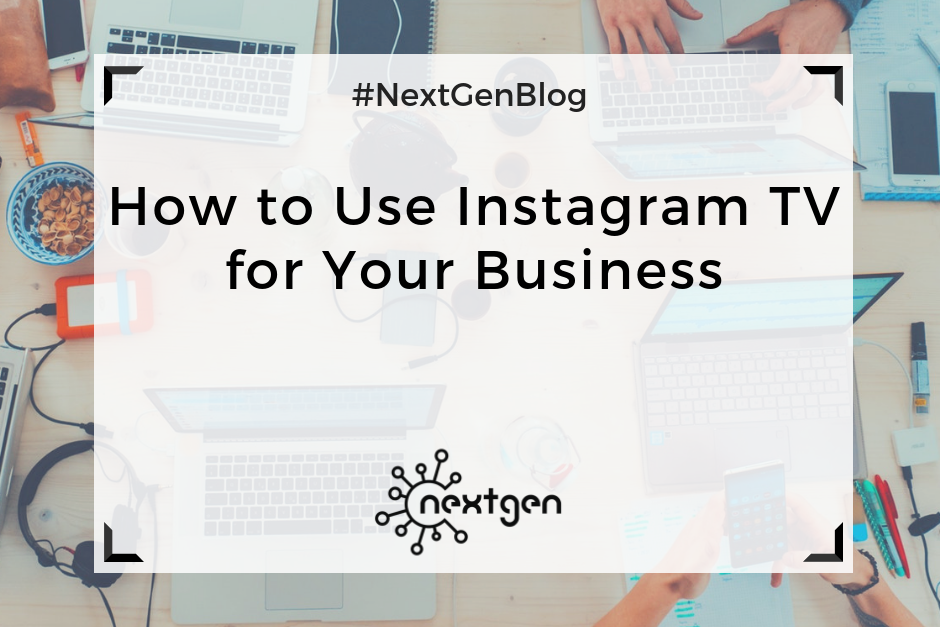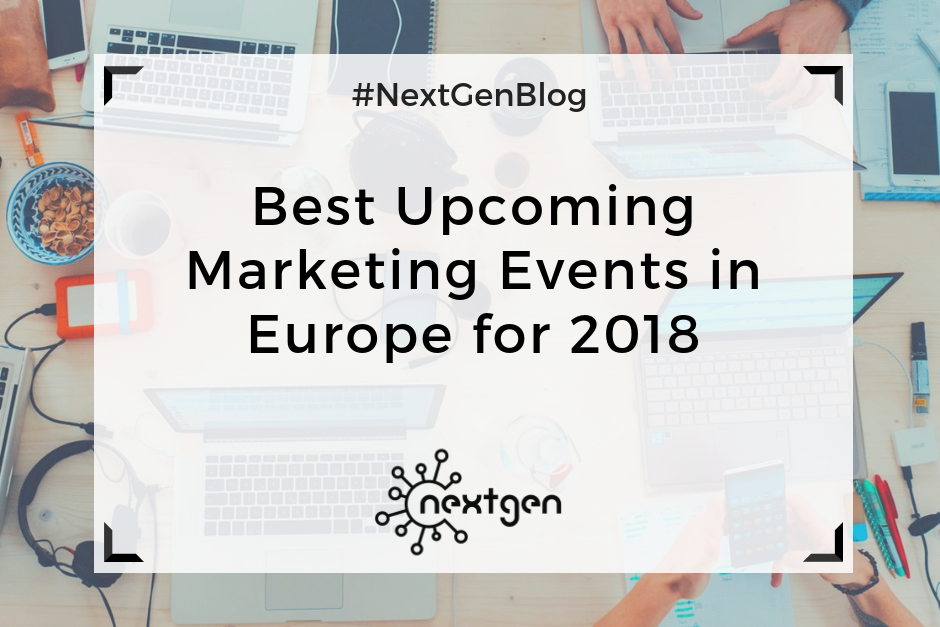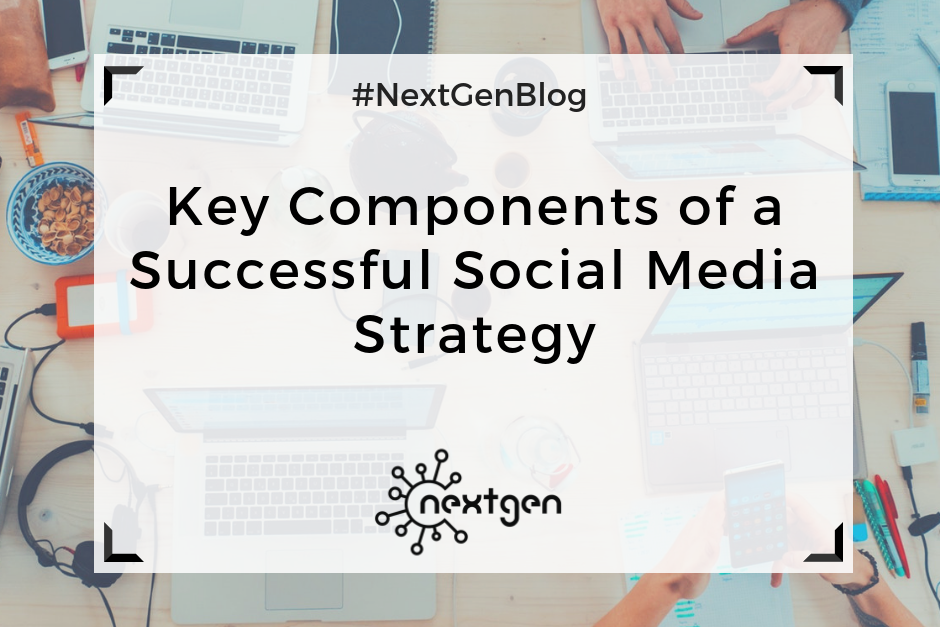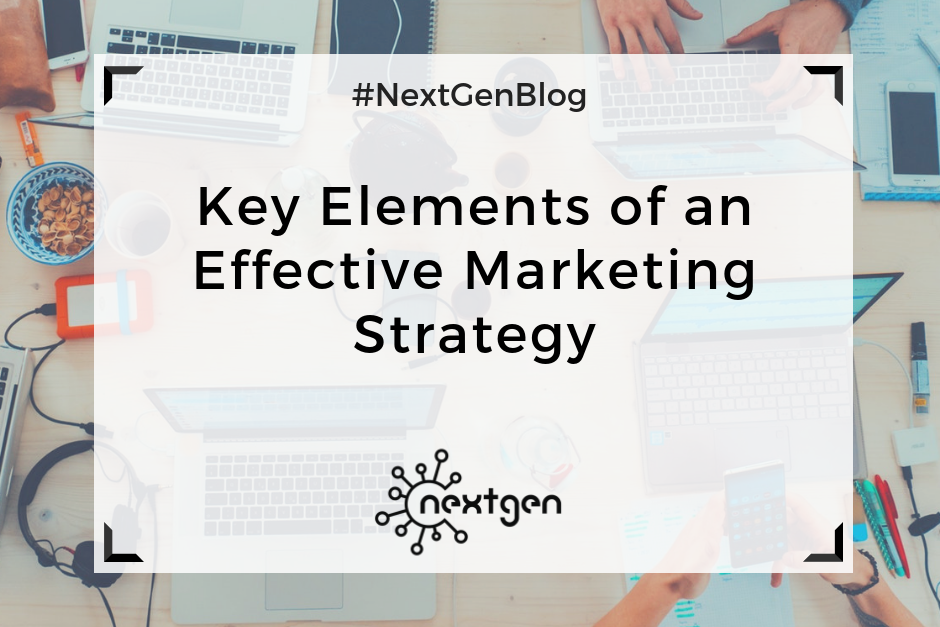
by Sofi | Sep 14, 2018 | Social Media Marketing
As one of the leading innovative social media platforms, Instagram released it’s newest feature over the summer: IGTV. This feature allows users to take longer videos in a vertical format suited for mobile devices with enhanced discoverability through channels. Instagram took advantage of the statistics revealing more people are watching digital videos than television, with mobile videos accounting for the majority of mobile data traffic. Using a simple and intuitive design fit for your mobile device, anyone can create content on IGTV. So, how can you utilize IGTV for your business? Check out these tips.
#1 Build stronger connections with customers
Use these longer and more permanent videos for deeper storytelling behind your business. IGTV allows for videos up to an hour long, and it stores them on your personal channel. This can be used to a brand’s advantage by showcasing other dimensions of your business without being limited to one type of content, length, or format. Sharing stories that resonate with your customers will build a stronger relationship between them and your brand. Meaningful connections that show the human side of your business are longer lasting.
#2 Create a better mobile experience
With 800 million users, it’s important to cater to the mobile Instagram user in a way that best suits their mobile experience. One of IGTV’s biggest boasts is the vertical format that perfectly fits mobile screens. Do not repurpose and upload old horizontal videos. Instead, start fresh and take your time creating new content that embraces the vertical format. Online audiences are more in touch with amateur videography than that of professionals. Vertical videos feel more personal, less produced, and are therefore more appealing to your audience.
#3 Know when to post
The general social media tip of knowing what times are best to post to reach your audience still applies. Instagram is currently giving IGTV priority by adding notifications for new videos, so users scrolling through their feed will instantly know when you upload content. This makes posting when your users are most likely using the app very important. Now is the time to take advantage of this new feature’s extra promotion. Be one of the first to step out and use IGTV! Consumers will remember that.
These tips will help you take advantage of IGTV as a feature. However, you might be wondering what kind of content will help you grow your business on IGTV. Check out these video content ideas.
#1 Frequently Asked Questions
Do your current and prospective customers continually ask the same questions on your posts, website, by email, and by phone? You can film a weekly Q&A answering all of the frequently asked questions you collect. This provides your customers with important information with a personal touch that can build their relationship with your brand. With some luck, you can save customer service time as well!
#2 Behind the Scenes
Everyone feels more connected to a brand when they can see what happens behind the scenes. You want your audience to respect your work and feel loyal to your brand. Bringing them behind the scenes, even digitally, makes people feel included. Customers want to see the real you, and using IGTV provides a more authentic approach.
#3 Product Reviews
Most likely, your Instagram followers follow you because they are already interested in your product. IGTV is a great way to give more in-depth product reviews that are visually appealing and personal. Tag other accounts that are relevant or included in your product reviews to make them aware of your content to increase reach.

by Sofi | Aug 24, 2018 | Other
Every year multiple marketing events take place in different cities around the world in various forms: conferences, summits, workshops and classes, seminars, trade shows and expos, etc. People gather together at these events for the purpose of networking, learning about new products and technologies, searching for new business opportunities, discussing important marketing topics and trends, and more.
Here is a list of the best upcoming marketing events for 2018:
#1 DigiMarCon (Digital Marketing Conference)
Date and location: 5-6 September – London, UK
Starting price: £497
Website: https://digimarconeurope.com/
DigiMarCon is one of the most important marketing conferences in Europe. Attending this conference will provide you the opportunity to learn about digital marketing from many marketing experts, as well as the opportunity to network with other marketers and business professionals. Some of this year’s conference topics include: Digital Strategy, Web Experience Management, Mobile Marketing & Retargeting, Social Media Marketing, Video Marketing, Email Marketing, Data Science & Big Data, Growth Hacking, Programmatic Advertising, and other relevant digital marketing topics.
#2 Web Summit
Date and location: 5-8 November – Lisbon, Portugal
Starting price: €495
Website: https://websummit.com/
The Web Summit is considered the largest technology conference in the world and is held annually since 2009. Last year, the conference had 60,000 attendees, which ranged from 500 Fortune companies to small companies within the technology industry. As of 2016, Web Summit is a host to various independent conferences; this year there will be 25 conferences, some of which include: AutoTech, ContentMaker, Corporate Innovation Summit, DeepTech, Growth Summit, Startup University, etc. The Web Summit is an event focused on internet technology, so digital marketers can greatly benefit from attending it.
#3 #DMWF Conference & Expo
Date and location: 19-20 September – Amsterdam, Netherlands
Price: €399 for one day, €699 for two days
Website: https://digitalmarketing-conference.com/europe/
The #DMWF Conference & Expo takes place in Amsterdam next month, and it is an event focused on digital marketing and social media. If you want to learn from some of the most disruptive thought-leaders in the industry–then this is the right event for you. Some of the session topics that are going to be covered this year are: successfully forming an interactive digital content marketing strategy to increase engagement, exploring the value of your website analytics, the value of diversity in marketing, understand how VR and 360 are transforming the marketing and communication industries, understanding the way AI is going to revolutionize and impact on the way brands interact with customers, and other important topics.
#4 NEXT Conference
Date and location: 20-21 September – Hamburg, Germany
Price: N/A
Website: https://nextconf.eu/
NEXT conference is a two-day event where you can learn about important digital trends and how they transform the marketing industry. The main topic for the conference this year is “Digital Fix – Fix Digital,” which is exploring the ways in which the digital world can be transformed. Attendees of this event will have great networking opportunities, as well as an opportunity to enjoy good music at the Reeperbahn Festival. You can get a ticket to attend the conference by applying for one of the four attendee groups: Regular Attendee, Startup Attendee, Student Attendee, or Press.
#5 Social Media Week London
Date and location: 14-16 November – London, UK
Price: £519 (Standard pass), £795 (Premium pass)
Website: https://socialmediaweek.org/london/
The SMW London is a leading three-day conference for marketers that explores how social media and technology influence business, society, and culture. This year the conference’s main theme is “Closer” which will explore the conflict between community and individualism. Three important sub-themes will also be discussed: The You Universe, The Social Divide, and AI vs. Humanity. If you’d like to learn about the newest trends and best practices in social media from leading business and marketing experts, then don’t miss the opportunity to attend SMW London this November.
***
Attending these types of events can be very beneficial for your business because it’s a great way to meet relevant people from the marketing industry and learn valuable information that you can later use to improve your marketing efforts.

by Sofi | Aug 17, 2018 | Marketing Strategy, Social Media Marketing
Every business needs a solid marketing strategy to ensure that they’re meeting the needs of current and potential customers to the best of the company’s ability. In today’s digital world, utilizing social media platforms and creating a social media strategy is an important element of this overall marketing strategy. According to HostingFacts, there will be an estimated 2.62 billion social media users in 2018. Social media is one of the most powerful (and FREE) marketing tools for your business, so you need a strategy to use this tool effectively. Here are the key components of a successful social media strategy.
#1 Identify Ideal Customers
Your social media posts should speak to a specific audience, which should also be your ideal customers. Creating or using your existing buyer personas will help you define and target the right people in the right places at the right times with the right messages. This will also help you choose the right social media platforms as part of your strategy later on. To create a buyer persona, you need to identify your ideal customers’ demographics, interests, problems, likes, dislikes, and motivations. Then you can create posts that best appeal to them.
#2 Set Goals and Objectives
The point of your marketing strategy is to accomplish business goals. You cannot move forward without knowing what you are working toward. The best way to do this is to look at your business’s needs and identify what you want to achieve with your strategy. Then, decide how you want to use social media to achieve these objectives. However, do not try to tackle all of your objectives at once through social media or else the messages will be confusing for followers. Focus on one goal at a time and switch when necessary.
#3 Choose Your Platforms
Most social media users have accounts on multiple platforms, but not every platform is right for your business. To effectively reach your audience, you will want to utilize more than one network, but do not attempt to engage customers on all networks or you will spread yourself too thin. The goal is to stay active on the platform you do use. Each platform caters to specific kinds of content and draws different demographic groups. To avoid wasting time and effort on the wrong platform, use your buyer personas to choose the right platform. Another helpful exercise might be to create a customer survey to find out what social media sites your clients actively use.
#4 Create Content Plan
Catching the attention of your audience requires great content. There are three main components to consider when creating a content plan: type of content, time of posting, and frequency of posting. All three of these components are heavily impacted by your platform, and each social media site has a unique “sweet spot” for each. All content online is generally the most successful when it is visual, emotional, and useful. This can be used as a guideline when deciding what kinds of content to create.
#5 Assigning Team Roles
The first step of deciding how to implement this strategy is deciding whether your internal staff will head your social media strategy, you will outsource the work, or have a combination of the two. Having a clear understanding of who is responsible for what will increase productivity and prevent confusion or overlapping efforts. Your strategy should assign all of the necessary roles and outline the exact responsibilities and expectations of each role. There are many tools available online to help your team develop content on their own, track the analytics of your social accounts, and manage/assign tasks to your team.
#6 Decide on Budget
Social media can be a completely free resource for your marketing needs, but there are also ways to spend money on any budget to increase effectiveness. There are also other expenses to consider such as social media monitoring and content creation. Will you need a graphic designer? Will you need video production? Do you plan on buying ads? Make a list of the tools and services you need, and then decide on the budget required for your current strategy. You can adjust your strategy until it fits your ideal budget
#7 Track Analytics and Adjust
Once you have your social media strategy outlined, it’s time for action! Execute your plan, and wait for results. Analytics tracking is one of the most important things you can do to improve your social media marketing strategy over time because it shows you what kind of content and promotion strategies are working or not working. There are many tools available online to help you track the progress of your social media accounts and analyze the data. Continuously making changes in order to improve the effectiveness of your accounts should be the most important factor in your social media strategy.

by Sofi | Aug 10, 2018 | Marketing Strategy
Coming up with an effective marketing strategy is very important for the success of your business because it can help you get new customers, increase sales, and gain a sustainable advantage over your competition. Essentially, a marketing strategy details what you want to achieve for your business and a plan of how you’re going to achieve those things.
These are some key elements that you should include in your marketing strategy:
#1 Goals
When you create your strategy, the first thing you need to do is to clearly define your business and marketing goals. Your goals may include increasing profits, getting new customers, building brand awareness, or anything else you want to achieve for your business. Setting realistic goals will help you decide where to focus your marketing efforts.
#2 Segmentation, targeting, and positioning
Identifying your potential customers and their needs is an essential part of a successful marketing strategy. You can conduct customer research to find out which customer segments you need to address. Then, you should evaluate the attractiveness of each segment and decide which segments you are going to target. Finally, you should develop a positioning strategy for each of your target customer segments.
#3 Brand messaging
Brand messaging communicates the value of your brand to your target audience and should ultimately convince them to buy your products or services. A unique and powerful brand message is one that people can easily associate with your brand. So, make sure the message you craft tells a story that makes your brand noticeable and differentiates you from your competitors on the market.
#4 Communication with customers
Maintaining effective communication with your customers is crucial for your success. So, another important component of a good marketing strategy is planning your communication tactics. You should know when and how to communicate with your audience to build and maintain meaningful connections.
#5 Promotional Activities
Once you know your goals, identified the elements of the STP process, have a nicely crafted brand message, and planned your communication strategy–it’s time to plan how you are going to promote your business, products, and services to your audience. You can achieve this with any type of promotional activities, such as: advertising, public relations, sales promotions, digital marketing, etc.
#6 Monitoring and evaluation
You should constantly monitor and evaluate your marketing strategy to know what works and what doesn’t. This way you’ll be able to make more informed decisions in the future and improve your marketing strategy over time.
#7 Marketing plan
When you have your marketing strategy prepared, the next step is creating a marketing plan of how you’re going to execute that strategy. The marketing plan should detail all the marketing activities you’re going to undertake and when. You need to have both a good marketing strategy and a good marketing plan for your marketing to be effective.

by Sofi | Aug 3, 2018 | Social Media Marketing
You probably hear about “viral” social media content regularly, and it is possible that you even view this kind of content multiple times a day. What exactly does “going viral” mean? Urban Dictionary explains it as an image, video, or link that rapidly spreads online by being frequently shared. In the marketing field, creating viral content is the best way for your brand or product to reach maximum exposure. Let’s look at five examples of brilliant viral social media content.
#1 WATERisLIFE’s first world complaints YouTube video
The non-profit organization WATERisLIFE created a controversial social media campaign that ended up being a huge success. They created a documentary composed of clips of the underprivileged with captions of common complaints from the privileged. Examples of such complaints are “I hate it when my phone charger won’t reach my bed” and “When I go to the bathroom and I forget my phone.” The result was a very striking visual that obtained over one million views in the first day. At the end of the video was the caption “First world problems…aren’t problems,” which directed interest to their Twitter as followers made their own captions with the hashtag #firstworldproblems.
#2 Cadbury’s giant chocolate Facebook thumb’s up
Originally as a thank you to fans for reaching one million likes, Cadbury constructed a giant Facebook thumb out of their Dairy Milk bars. The photo of this construction quickly went viral, and they gained an additional 40,000 followers within a very short amount of time. Due to this success, they decided to stream a live real-time video that showed the making of the thumb. The video alone was viewed by over 350,000 fans around the world.
#3 Dunkin’ Donuts and #thedress
You might remember when the color of #thedress sparked debate all over the internet. It started when Scottish singer Caitlin McNeill posted a picture of her dress on Tumblr asking users if the color was blue/black or white/gold. Dunkin’ Donuts capitalized on this piece of viral content in order to make their own viral content based on something that they already knew was wildly popular on the web. The company tweeted a picture of black/blue and white/gold glazed donuts with #thedress hashtag. Adding to an internet craze already in effect, the post was an instant success.
#4 Kellog’s Eggo campaign with Stranger Things
Netflix original Stranger Things has a cult following that invaded popular culture, so when the second season came out Kellog jumped on board to take advantage of the character Eleven’s favorite snack: Eggo waffles. Kellog discussed a marketing campaign with Netflix before the new season came out that resulted in an advertisement partnership. Their marketing team prepared a whole line of Stranger Things inspired ads, including a tweet written upside down asking the Stranger Things Twitter if they were messing with Kellog again. Fans loved the partnership of these two companies.
#5 Chiquita Banana’s solar eclipse
There was a lot of hype online regarding the 2017 solar eclipse, and Chiquita took credit for this eclipse by dubbing the sun’s crescent shape the “Banana Sun.” For a full three weeks leading up to the eclipse, the company created gifs, a website, and even a massive glowing banana. This content gained Chiquita thousands of new Twitter followers, hundreds of comments, and thousands of retweets. They even released banana eclipse videos that reached over a million views each.






